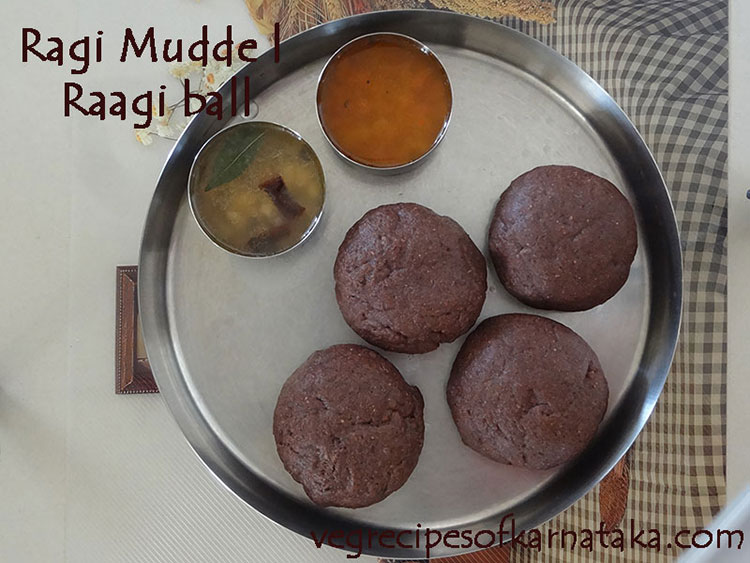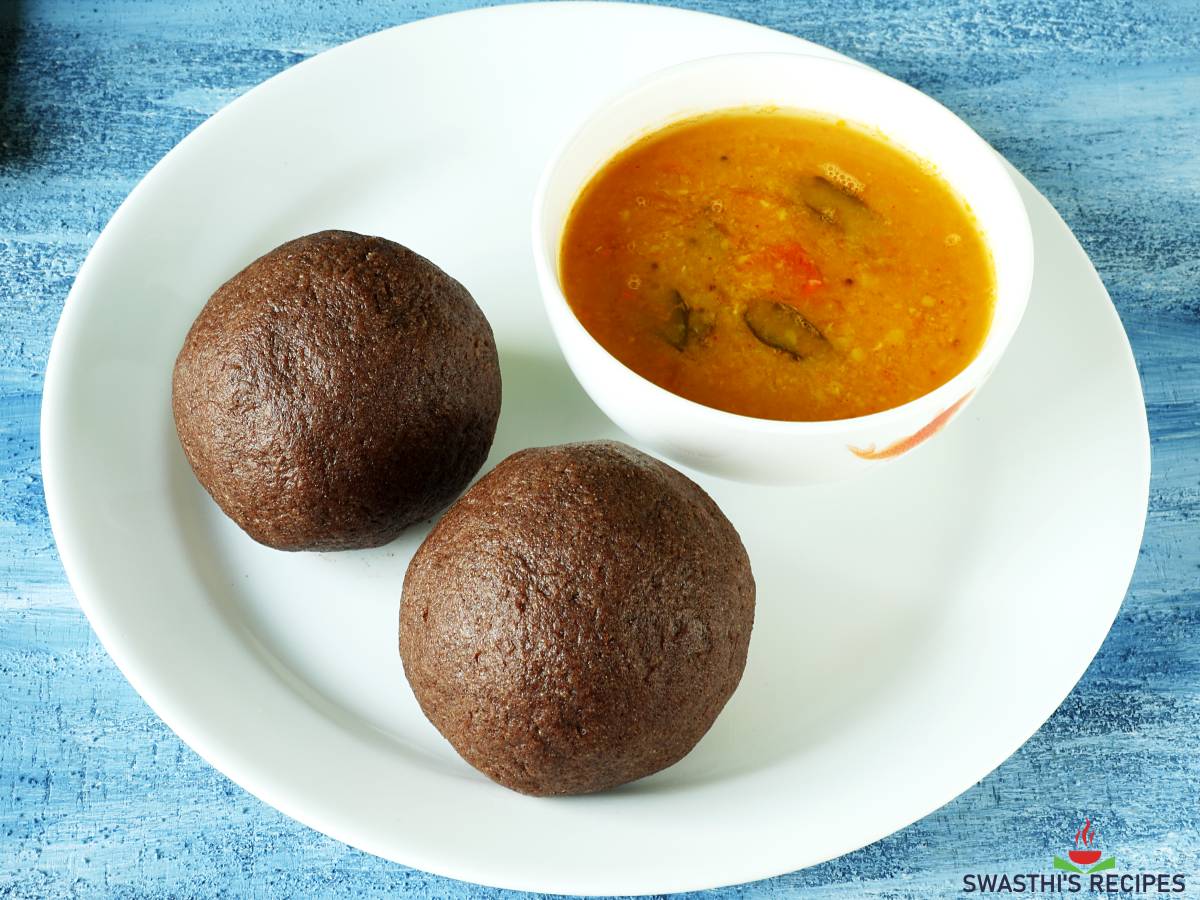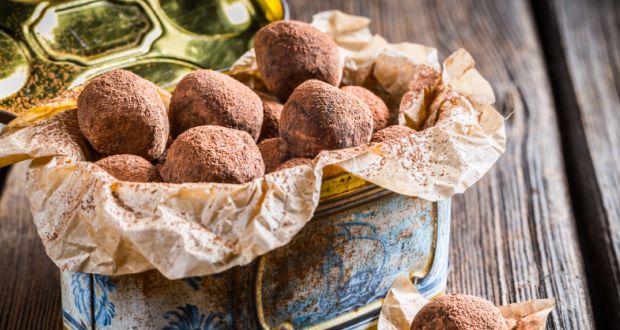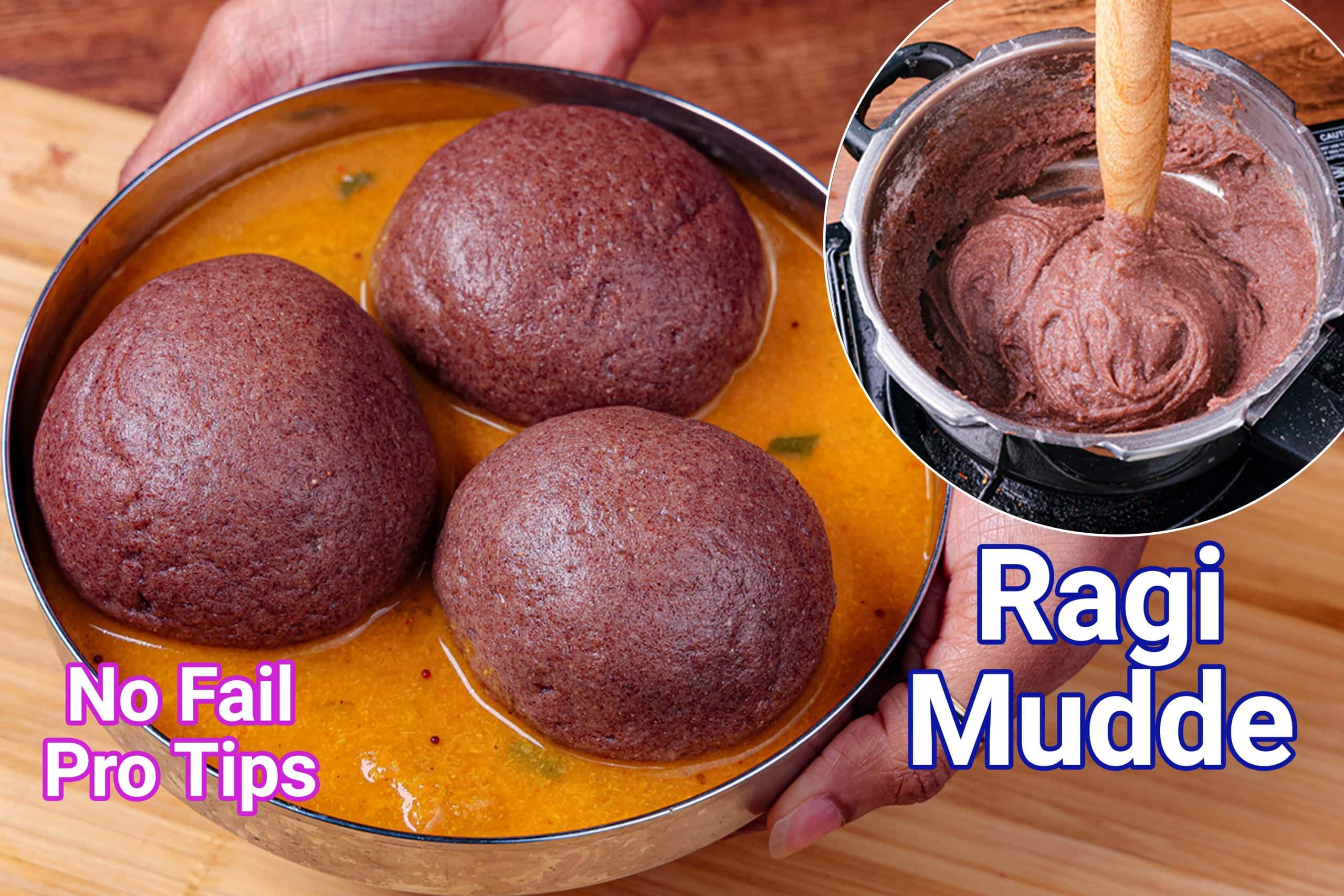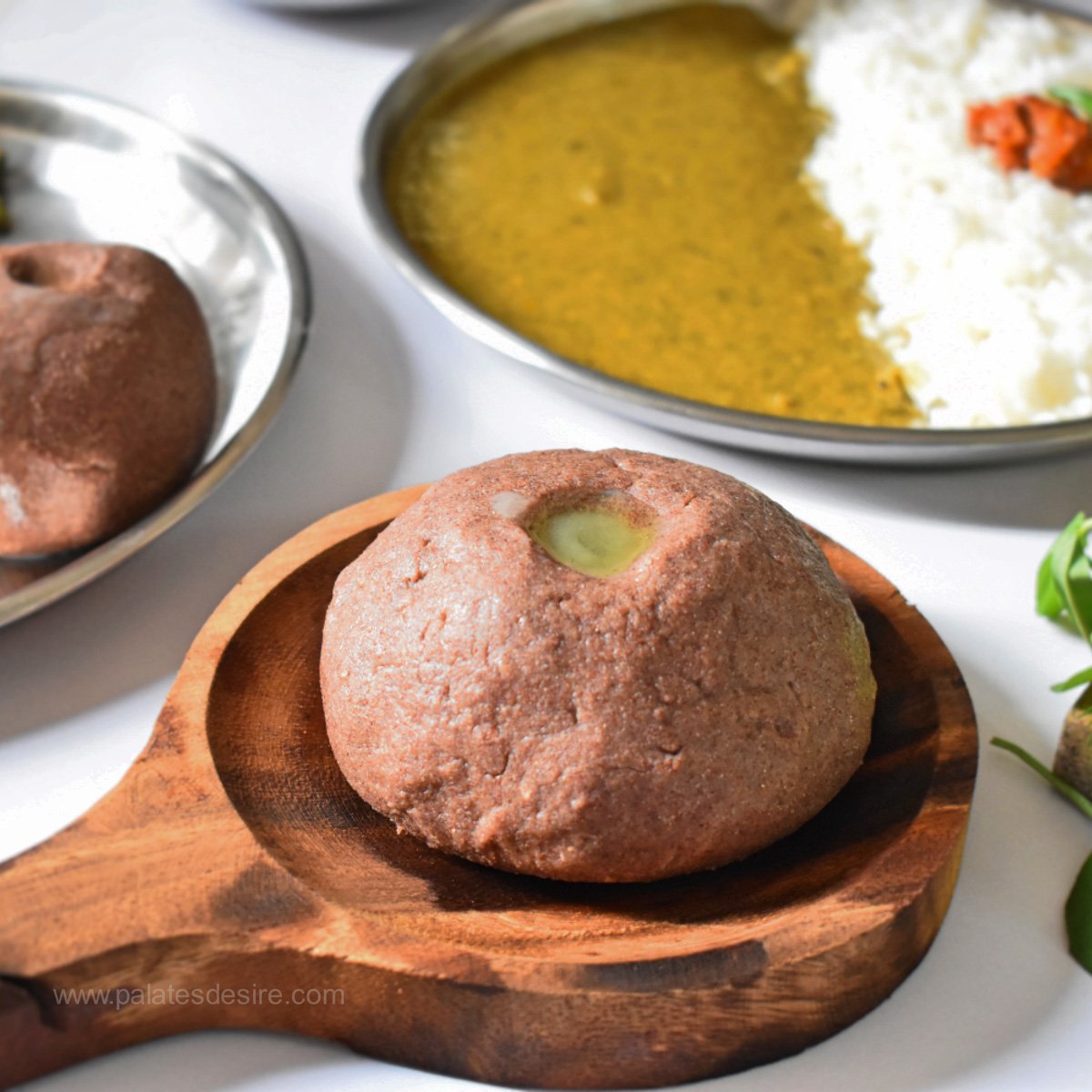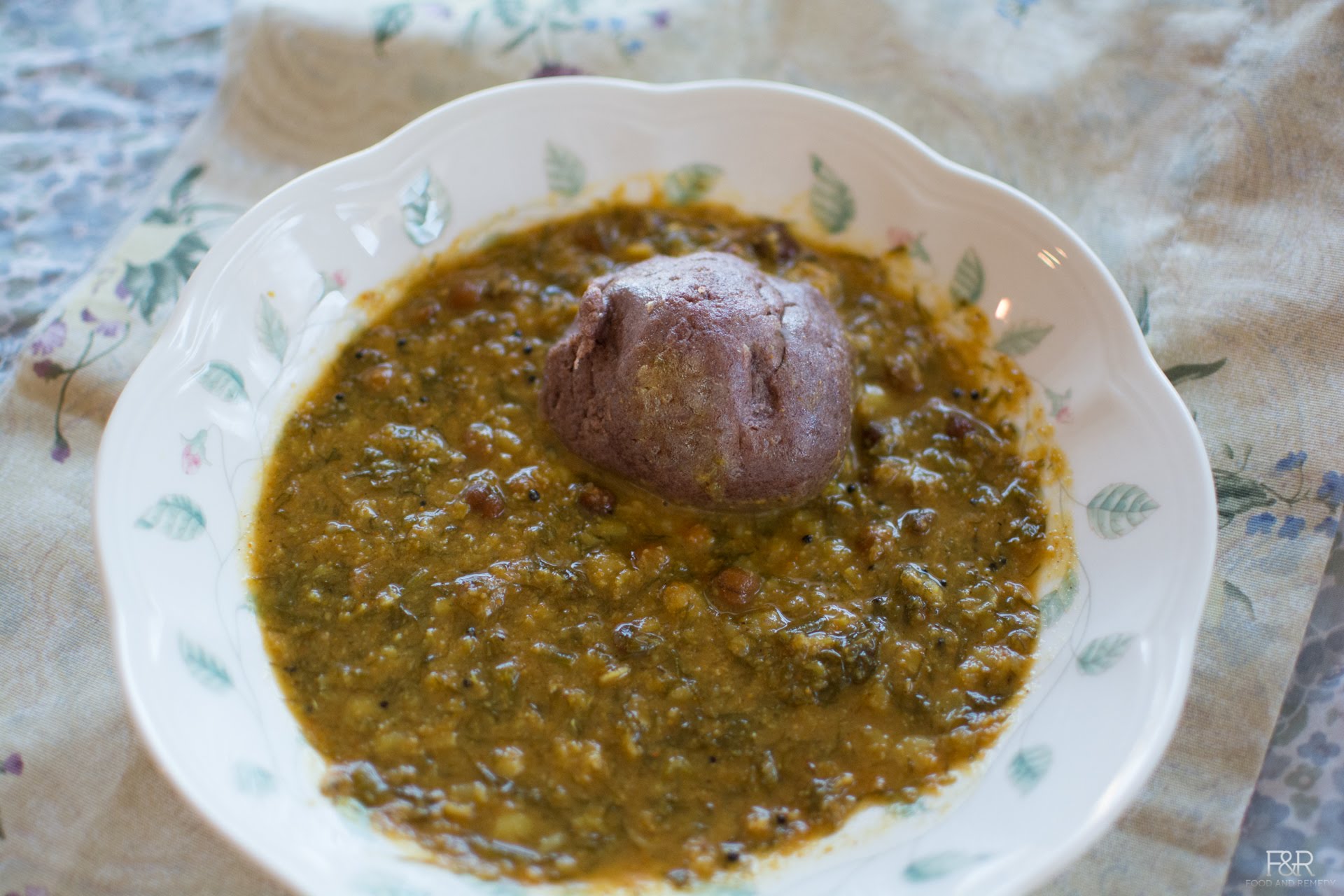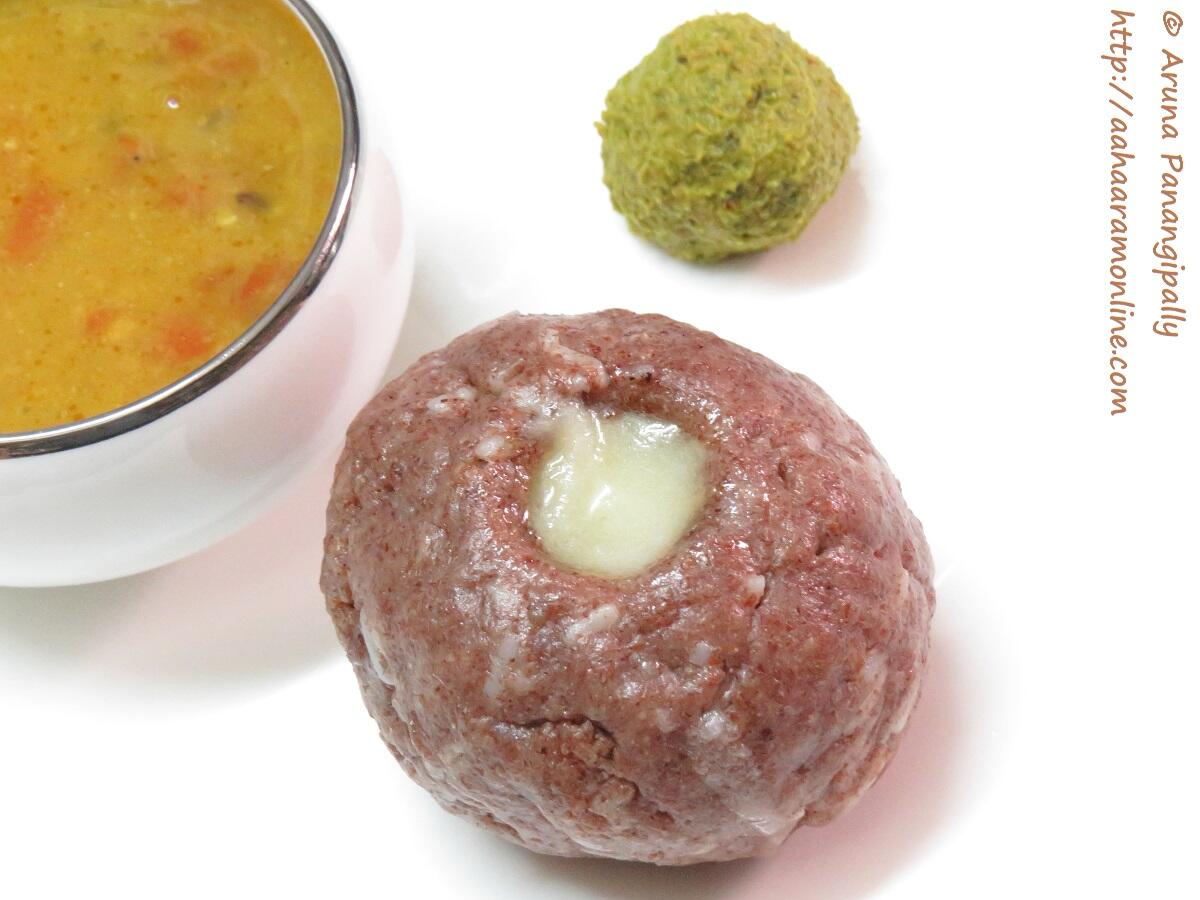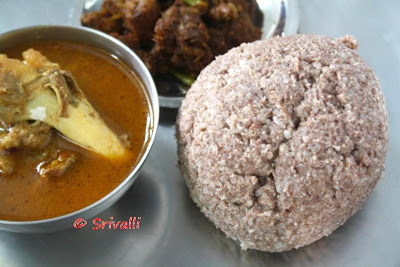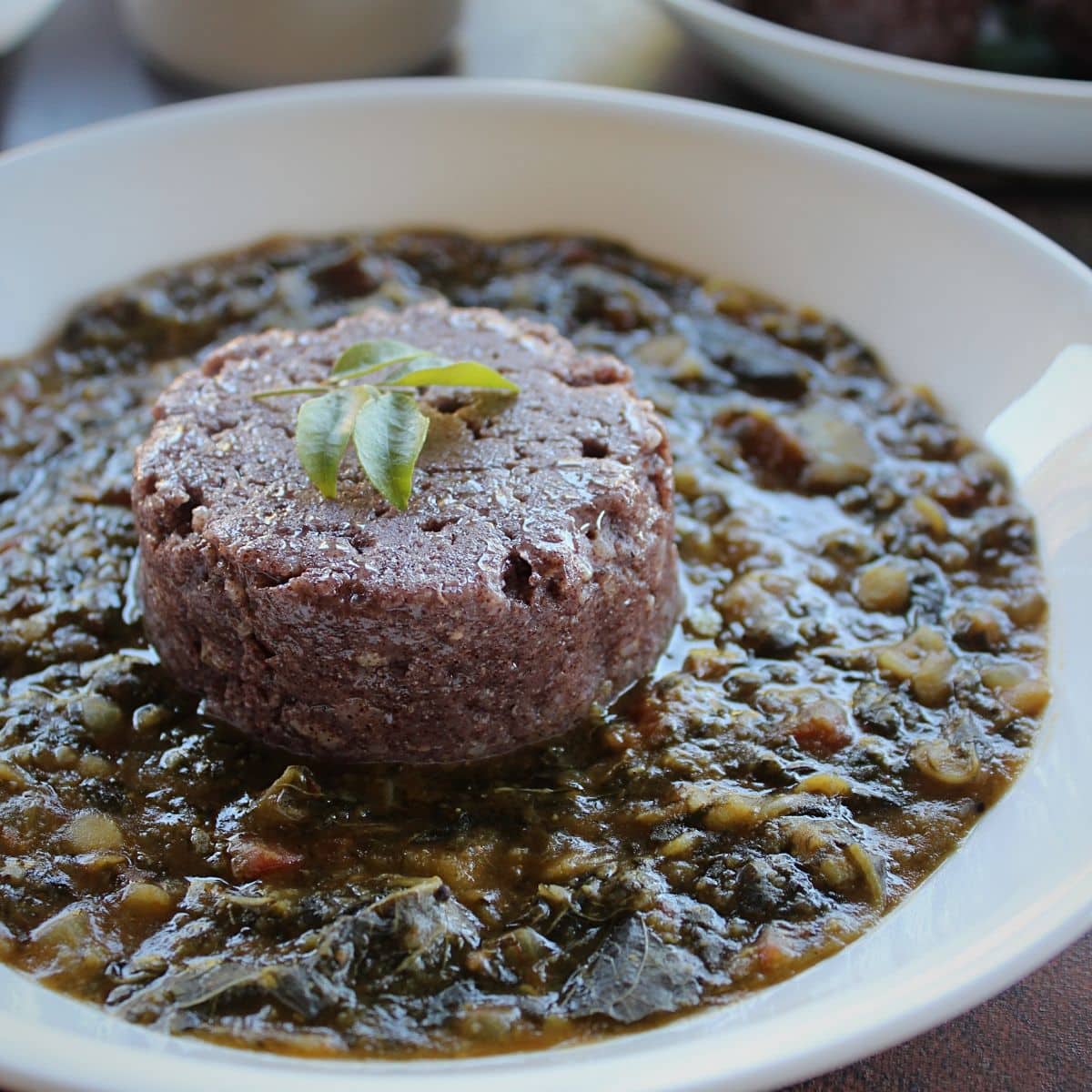Ragi mudde
mudde, HiTTu, ragi sangati, ragi kali
Ragi mudde, ragi sangati or kali, colloquially simply referred to as either mudde or hittu which means 'lump' or 'dough', is a finger millet swallow dish of India in the state of Karnataka and Andhra Pradesh . In Tamil Nadu, especially in western Tamil Nadu, it is also called ragi kali. Ragi mudde is the main food in Kolar, Mandya, Hassan, Mysore, Tumkur, Bengaluru Rural, Ramanagar districts in Karnataka and Rayalaseema Region in Andhra Pradesh. A similar variation known as dhindo is also eaten in Northeast India, Nepal and Bhutan. In Uttarakhand and Himachal Pradesh in northern India, a similar variation is known as baadi and baari respectively. Ragi mudde has only two ingredients: ragi (finger millet) flour, and water. A tablespoon of ragi flour is first mixed with water to make a very thin paste and later added to a thick-bottomed vessel containing water on a stove top. As this mixture boils and reaches the brim of the vessel, ragi flour is added, which forms a mound on top of boiling water. Once the ragi flour is added, it requires immediate mixing (to avoid lumps) with the help of a wooden stick (Kannada: ಮುದ್ದೆ ಕೋಲು: mudde kolu/Kannada: ಹಿಟ್ಟಿನ ದೊಣ್ಣೆ: hiTTin doNNe); the flour is beaten to a smooth dough-like consistency with no lumps. Then it is allowed to cook on medium-high flame. This hot dough is then rested on low heat before being rounded on a wooden board into tennis-ball-sized balls with wet hands. Thus prepared ragi balls are broken down into smaller balls using fingers and dipped into saaru (Kannada: ಸಾರು)/hesru (Kannada: ಹೆಸ್ರು), chutney or gojju. Ragi is not supposed to be chewed.
Source: Wikipedia
Recipes
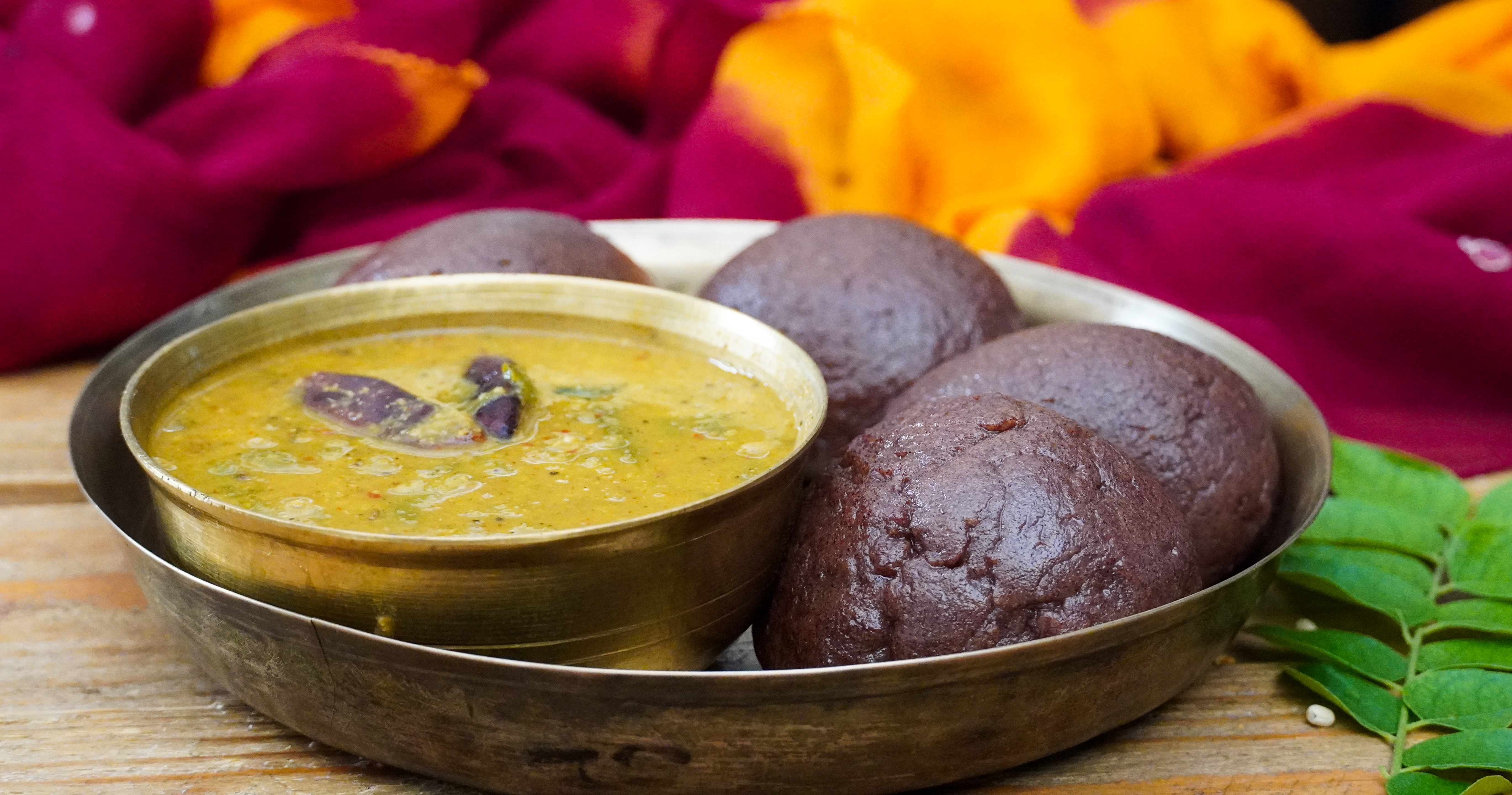
Soft & Delicious Ragi Mudde Recipe by Archana's Kitchen
